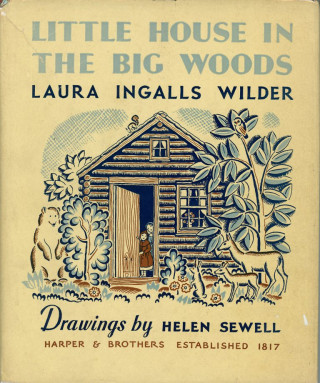Amid an early 1970s television landscape full of cop shows, car chases, and controversy-courting sitcoms, producer Ed Friendly rolled the dice on a family-centered historical drama based on a beloved series of children’s books. After a successful two-hour pilot film aired in March of 1974, the regular series was greenlit to launch on September 11 of that year. The series, Little House on the Prairie, would be a significant hit, firmly entrenched in the Nielsen Top 20 for six of its nine seasons. Here’s how that little house got built.
The real Laura Elizabeth Ingalls was born in Wisconsin in 1867 to Charles and Caroline. She was the second of the Ingalls children, following her older sister Mary and preceding Carrie, Charles Jr. (who died at nine months), and Grace. The family moved frequently during her youth, including stays in Missouri, Kansas, Minnesota, Iowa, and Dakota Territory. Laura began teaching at 16 and married Almanzo Wilder when she was 18. By 1894, the Wilders began to build a successful farm that over time included dairy, poultry, and fruit. Laura became a familiar face in farm organizations and she grew into a public speaker.
The Missouri Ruralist invited Wilder to write for them in 1911, and she quickly became an established columnist (“As a Farm Woman Thinks”), then editor. Laura’s daughter, Rose Wilder Lane, had developed her own writing career, and by the 1920s was experiencing her own success and establishing herself as an early Libertarian thought-leader. Lane encouraged her mother to write more; two of Wilder’s pieces appeared in The Saturday Evening Post-affiliated Country Gentleman. Eventually, Wilder published the first of the “Little House” books, Little House in the Big Woods, in 1932.
The “Little House” series consisted of eight official releases — Little House in the Big Woods (1932), Farmer Boy (1933), Little House on the Prairie (1935), On the Banks of Plum Creek (1937), By the Shores of Silver Lake (1939), The Long Winter (1940), Little Town on the Prairie (1941), and These Happy Golden Years (1943) — and a ninth book that was published posthumously that is also considered part of the series, The First Four Years (1971). Additionally, there are around twenty other books that are compilations of Ingalls’s journals, diaries, columns, articles, and letters that present a broader picture of her experiences across her entire life. After Wilder’s passing in 1957, control of her estate and publishing rights went to Lane; upon Lane’s passing, they went to Roger Lea MacBride, a lawyer and Libertarian politician with whom Lane was close.

